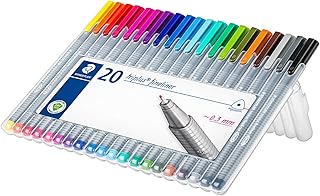Five evidence-based mood tracker templates offer systematic approaches to emotional monitoring and mental wellness documentation. The Simple Monthly Grid provides calendar-based tracking, while Digital Spreadsheets enable automated analysis. Weekly Emotion Wheels facilitate visual pattern recognition, and Mind-Body Checklists document physical-emotional correlations. Habit and Mood Charts examine lifestyle-emotion relationships. These structured frameworks reveal valuable insights about personal emotional patterns and behavioral triggers through continued exploration.
Simple Monthly Grid Tracker
The Simple Monthly Grid Tracker represents a foundational mood tracking tool that organizes daily emotional states into a systematic calendar format. Users can efficiently document their daily moods using color codes, symbols, or numerical ratings within each calendar box, creating a visual representation of their emotional journey throughout the month.
This structured approach enables individuals to identify seasonal mood patterns and correlate emotional states with specific events or circumstances. By maintaining consistent daily entries, users can recognize recurring personal mood triggers and develop targeted coping strategies. The grid format facilitates pattern recognition across weeks and months, allowing for the observation of emotional trends that might otherwise go unnoticed.
Mental health professionals often recommend this tracking method for its accessibility and effectiveness in monitoring mood fluctuations. The systematic documentation provides valuable data for therapeutic discussions and helps individuals make informed decisions about their mental wellness routines.
Digital Mood Journal Spreadsheet
Modern digital mood journal spreadsheets provide a customizable electronic alternative to paper-based tracking systems, allowing users to record, analyze, and visualize their emotional states through automated data processing. These digital templates integrate features like dropdown menus, formulas, and graphing capabilities to transform raw emotional data into meaningful insights.
Users can input daily mood ratings, emotional triggers, and contextual factors into organized spreadsheet cells. The system automatically generates color coded mood trends and charts, enabling quick visualization of emotional patterns over time. This digital format facilitates the identification of personalized mood patterns through built-in analytical tools and filtering options.
The spreadsheet format also allows for easy data backup, sharing with mental health professionals, and modification of tracking parameters as needed. Additional columns can capture sleep quality, medication adherence, physical symptoms, and other variables that may influence emotional well-being.
Weekly Emotion Wheel Template
While digital spreadsheets offer robust data analysis, weekly emotion wheel templates provide a structured visual approach to emotional awareness and tracking. The circular design segments emotions into core categories, allowing users to identify and record their feelings with increasing specificity from the center outward.
The template typically features concentric rings that help users document emotion intensity levels throughout each day of the week. By color-coding or shading segments, individuals can quickly visualize their emotional states and identify mood pattern trends. The outer ring often includes nuanced emotional descriptors, while the inner circles contain broader feeling categories.
Users mark their emotional states at designated times, creating an exhaustive weekly overview of their psychological experiences. This visual format helps therapists and individuals recognize recurring patterns, triggers, and emotional progression over time, facilitating more effective mental health management and personal growth strategies.
Daily Mind-Body Checklist
Mental health practitioners recognize daily mind-body checklists as essential self-monitoring tools that bridge the connection between physical sensations and emotional states. These structured self reflection prompts enable individuals to systematically track their physical symptoms, emotional patterns, and behavioral responses throughout the day.
The daily mind-body checklist template incorporates emotional awareness activities that help users identify correlations between their physiological experiences and psychological well-being. This evidence-based approach allows for the documentation of:
- Physical indicators like sleep quality, energy levels, and appetite changes
- Emotional states including anxiety, contentment, or irritability
- Behavioral patterns such as social interactions and daily activities
Habit and Mood Correlation Chart

Building upon daily mind-body awareness, the Habit and Mood Correlation Chart serves as a systematic tool for identifying relationships between lifestyle behaviors and emotional states. This data visualization template enables users to track multiple variables simultaneously, revealing patterns that might otherwise remain unnoticed.
The chart specifically examines the correlation between sleep quality and emotional well-being, allowing individuals to document both their hours of rest and subsequent mood fluctuations. Similarly, it tracks the correlation between exercise routine and daily emotional stability, providing insights into how physical activity influences mental states.
Users can plot daily activities against mood ratings using a simple grid system, with activities listed vertically and mood scores horizontally. Color coding or numerical values help visualize trends over time. This empirical approach helps individuals identify which habits consistently correspond with positive emotional states, facilitating evidence-based lifestyle modifications for improved mental wellness.
Conclusion
Research indicates that consistent mood tracking can increase emotional self-awareness by up to 45% within three months of regular practice. These five evidence-based templates provide structured frameworks for monitoring psychological states, behavioral patterns, and emotional fluctuations. When implemented systematically, mood tracking tools enable individuals to identify triggers, optimize well-being interventions, and facilitate more productive discussions with mental health professionals.
Tracker Supplies
Affiliate links – we earn from qualifying purchases.












